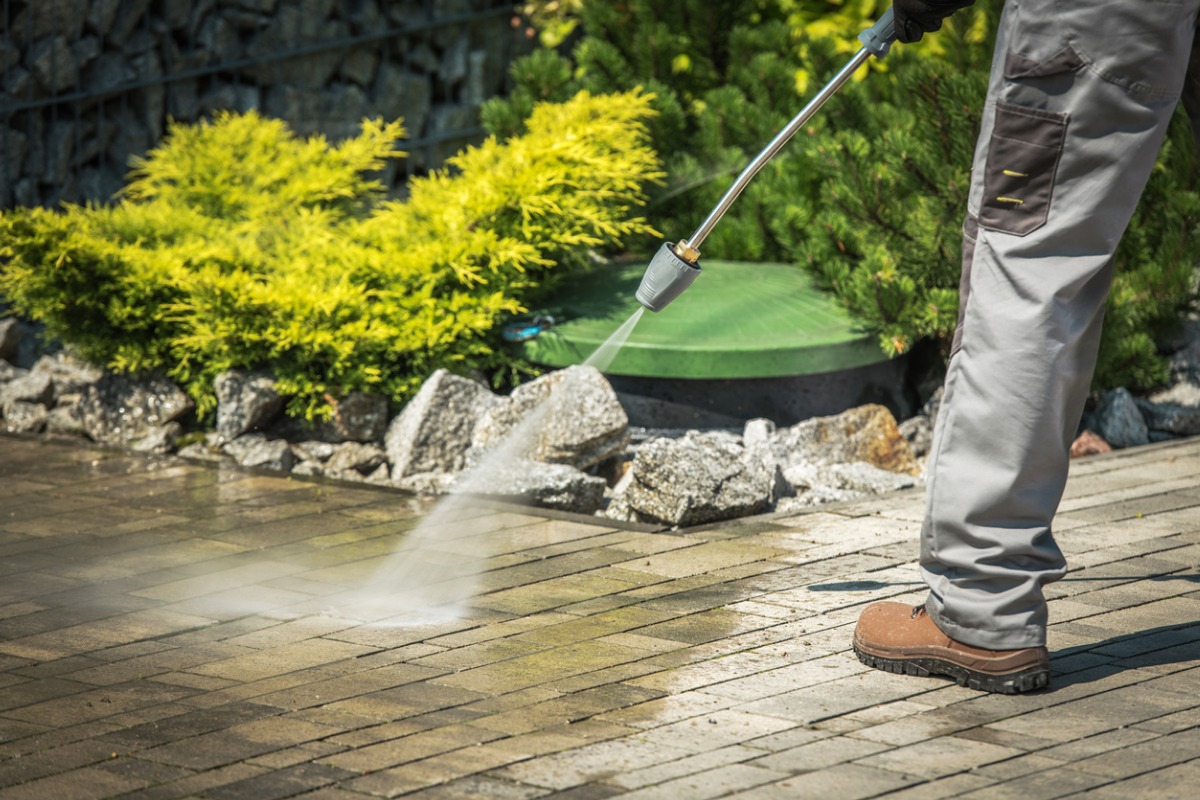Why Pressure Washing Lockhart Is the Leading Option for a Thorough Deep Clean
Why Pressure Washing Lockhart Is the Leading Option for a Thorough Deep Clean
Blog Article
Revitalize Your Home: The Ultimate Guide to Pressure Laundering
Stress washing is an invaluable tool for homeowners aiming to bring back the visual charm and long life of their properties. To navigate these intricacies and attain optimal results, it is crucial to check out the basic aspects of pressure cleaning, consisting of useful suggestions on making sure and addressing typical discolorations safety and security throughout the procedure.
Understanding Pressure Washing
Stress cleaning is an effective cleansing method that utilizes high-pressure water spray to eliminate dirt, gunk, mold and mildew, and various other contaminants from various surfaces. This technique is particularly efficient on difficult surface areas like driveways, pathways, decks, and house siding, where conventional cleaning techniques might fail. By employing specific tools that generates high-pressure streams of water, pressure cleaning can pass through deeply into surfaces, successfully dislodging and getting rid of stubborn particles.
The procedure is not only effective yet also eco-friendly, as it typically depends only on water, decreasing the requirement for harsh chemical cleaners. In addition, pressure cleaning can enhance the aesthetic allure of buildings, keeping their worth and lengthening the lifespan of surfaces by stopping damage brought on by impurities.

Choosing the Right Tools
Picking the ideal equipment is important for accomplishing optimum outcomes in pressure washing. Gas units, on the other hand, use greater stress and flow rates, making them suitable for bigger jobs such as cleaning up driveways or home siding.
Following, take into consideration the stress rating, determined in extra pounds per square inch (PSI) For light-duty tasks, a stress washer with 1,300 to 1,600 PSI suffices, while medium-duty work usually require 1,600 to 2,500 PSI. Heavy-duty tasks might demand machines exceeding 2,500 PSI.
Additionally, the flow price, gauged in gallons per min (GPM), affects cleaning up effectiveness (Pressure Washing Lockhart). A greater GPM enables quicker cleansing yet might call for extra effective tools
Strategies for Effective Cleaning

The technique of overlapping strokes is essential for even protection. In addition, preserving a consistent distance from the surface, commonly 12 to 18 inches, allows for effective application without triggering injury.
Using the proper nozzle is also necessary. A wide-angle nozzle is perfect for bigger locations, while a slim nozzle can target stubborn dirt or gunk. In addition, making use of a sweeping motion instead than a stationary spray aids to prevent concentrated areas of pressure, which might result in surface area damage.

Taking On Common Stains
When it comes to keeping the appearance of outside surfaces, dealing with typical spots efficiently is important for extending their life expectancy and enhancing curb allure. Numerous surface index areas, including concrete, wood, and vinyl, can collect spots from organic products, oils, and toxic wastes, requiring a targeted approach.
For oil discolorations, a mix of degreasers and pressure washing can generate exceptional results. Apply the degreaser to the tarnished area, allowing it to permeate before making use of a stress washer to get rid of the residue. Organic stains, such as mold or algae, commonly require a solution having bleach or a devoted mold eliminator, complied with by stress washing to restore the surface area's original appearance.
Rust discolorations, usually found on metal surfaces, may necessitate customized rust eliminators. Apply the item and scrub the area prior to pressure cleaning to get rid of any sticking around discoloration. It is essential to test any kind of cleaning solution on a small, low-profile location initially to avoid damages.
Security Tips and Best Practices
Ensuring safety and security while pressure washing is paramount, as the high-pressure water can pose substantial threats otherwise taken care of properly. To safeguard yourself and others, always wear appropriate individual safety equipment (PPE), consisting of security goggles, handwear covers, and tough shoes. This gear will certainly shield you from flying particles and the capacity for injury.
Before beginning, evaluate moved here the pressure washer for any type of leakages or damaged parts. Acquaint on your own with the equipment's manual to comprehend its procedure and safety and security features. Furthermore, ensure the area you are functioning in is devoid of challenges which any kind of electrical connections are risk-free from water direct exposure.
When running the pressure washing machine, maintain a risk-free range from surface areas and stay clear of intending the nozzle at people, animals, or breakable objects. Use the right nozzle for the job, as different nozzles produce varying spray patterns and pressure levels. Be mindful of your surroundings: safe loose items, watch for electric lines, and prevent working in wet conditions that might lead to drops or slips.
Final Thought
In conclusion, stress washing offers as a vital device for property owners looking for to boost home aesthetic appeals and long life. By understanding the details of tools selection, efficient cleaning methods, and usual tarnish removal, the capacity for renewing one's home becomes obvious.
Stress washing is a powerful cleansing approach that uses high-pressure water spray to eliminate dust, crud, mold, and other pollutants from numerous surfaces. By utilizing customized equipment that produces high-pressure streams of water, stress washing can permeate deeply right into surfaces, efficiently displacing and washing away persistent particles.
However, it is visit homepage necessary to understand that pressure washing calls for a certain level of ability and expertise to stay clear of damaging surfaces. Softer products like timber or painted surfaces require a reduced pressure setting to prevent damages, whereas concrete or block surface areas can endure greater stress levels.
Organic spots, such as mold or algae, usually need a solution consisting of bleach or a committed mold and mildew remover, adhered to by pressure cleaning to recover the surface area's original appearance. - Pressure Washing Lockhart
Report this page